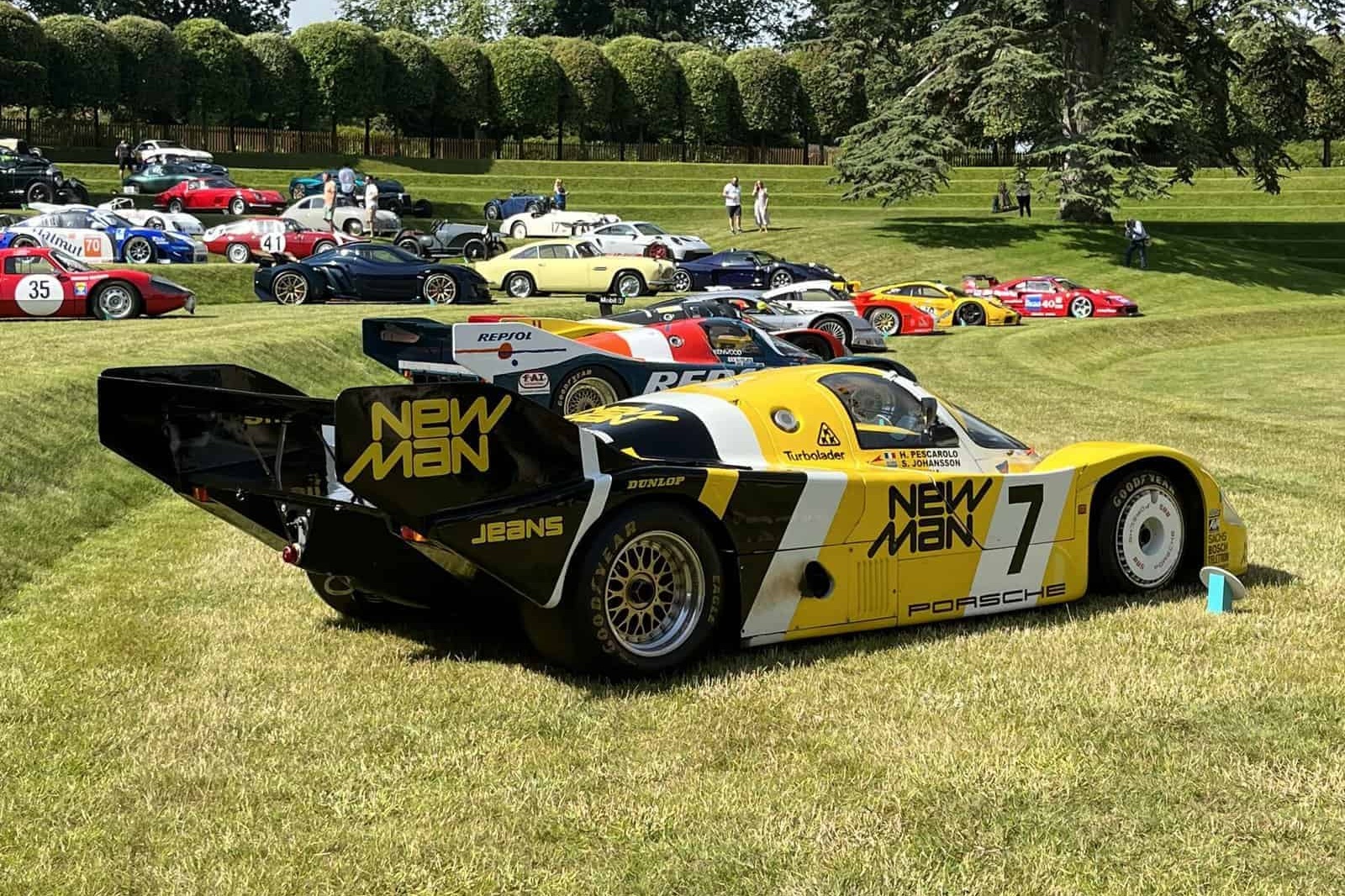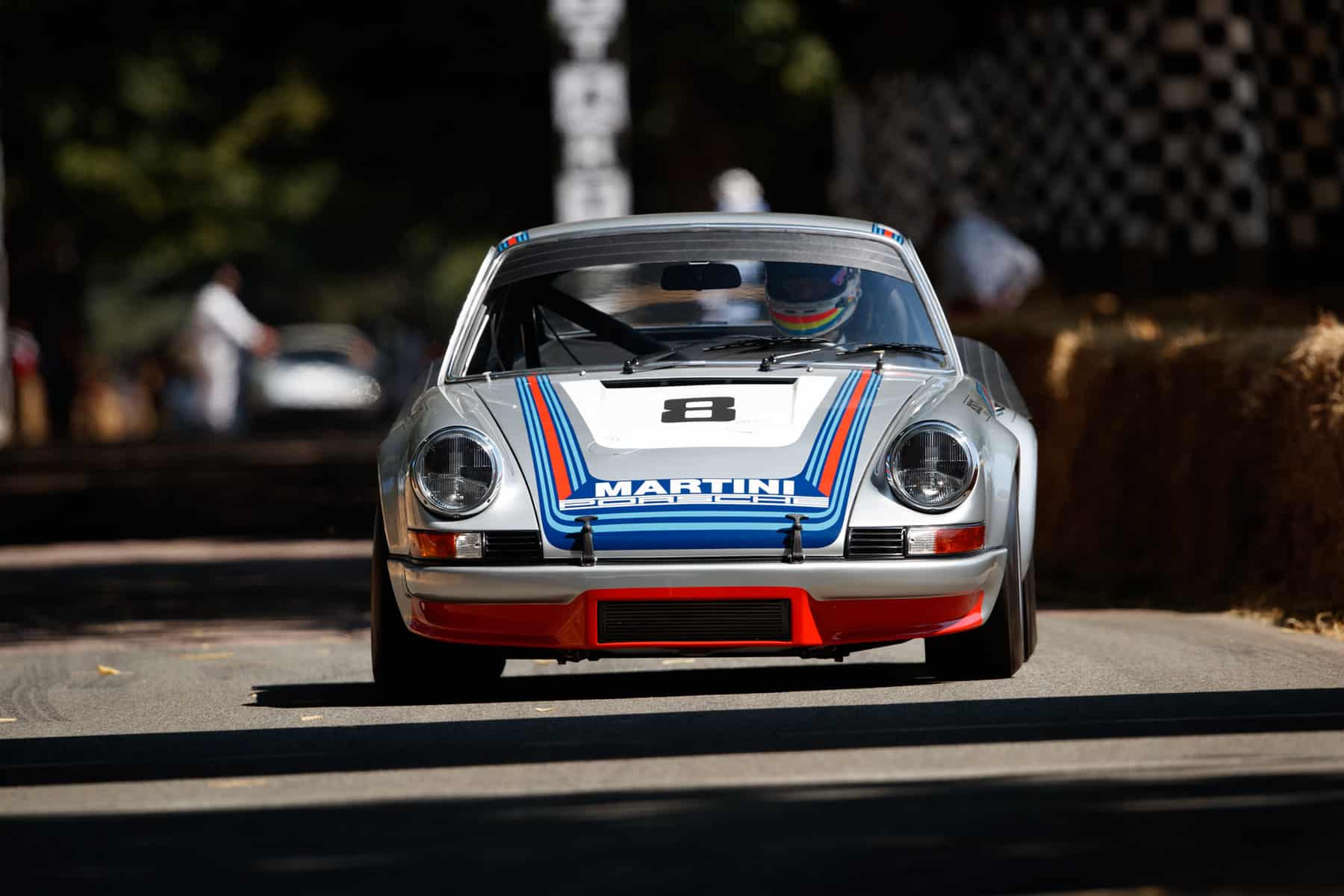The Elva Porsche Saga
A legend that lived up to its name – elle va, or, "she goes," in the French
WORDS & IMAGES BY: KARL LUDVIGSEN
The marriage of a light space-framed British chassis with a robust Porsche engine seemed like a marriage made in heaven. The Elva Mark VIII Porsche won its first race and became a major irritant to more powerful cars on American tracks.
In the early 1960s Porsche’s sports-racing cars were suited to the endurance races that were its bread and butter. They starred in tough long-distance races, classic competitions like Le Mans and Sebring that had become traditional for the company and its customers. They were much less tailored to the shorter sprint races common in North America, where Britain’s light and lively newcomers Lotus, Elva and Lola were winning more and more races and dominating the under-two-liter class.
This dichotomy started America’s enthusiasts thinking about lighter chassis for the tough, reliable engines from Stuttgart. Such a group gathered in Puerto Rico where Dan Gurney was driving a Porsche Type 718 Spyder in November of 1962. Gurney, Oliver Schmidt and some friends speculated during a bench-racing session about the possibilities of air-cooled Porsche power in a very light chassis like the ones being built in England.
Chicago-based Schmidt was in a position to do more than talk about it. He was the Porsche importer-distributor in America’s Midwest, an activity that he enjoyed spicing with the racing of interesting cars, including Porsches. Substance was added to his musings when the SCCA established its United States Road Racing Championship or USRRC in 1963. Two-liter cars could compete for points and money in this new series on an equal basis with the big sports-racers.
Thoughts turned to the ultra-low Mark VII Elva, a tube-framed car built in Rye, Sussex by Briton Frank Nichols. The needed link was not far from Schmidt. Elvas were imported by a young Chicagoan, Carl Haas, who was another enthusiastic racer with many successful Porsche Speedster miles. Through Haas, who held a minority interest in Elva, Nichols was approached that winter about building a Porsche-powered car. He was happy to oblige. He would use the new-in-1963 Mark VII S chassis he was already upgrading to take BMW and Twin-Cam Ford engines.
Ollie Schmidt traveled to Stuttgart to quiz Ferry Porsche personally on engine availability. Encouraged by sports director Huschke von Hanstein, who saw the merit of a lighter Porsche-powered car for sprint events, Ferry assented on the condition that the cars “did not fall apart.” He even agreed to supply the exotic Type 771 2.0-liter eight-cylinder when it was ready for sale.
“I was completely responsible for the creation of the Elva Porsche,” wrote von Hanstein later. “We agreed that this car was to be named Elva Porsche, which proved that it belonged to the Porsche family. This proves clearly that the Elva Porsche must be regarded as a Porsche design model.” History has not been helpful to Huschke, for the cars are often referred to simply as Elva Mark VIIs.
Technical liaison with Porsche on the project was handled by Herbert Linge with numerous visits to the factory at Rye on England’s south coast. “He started off believing that the job was impossible,” wrote British journalist John Blunsden—“the Elva’s windshield stood as high as the door handles on a Porsche Spyder!—but gradually became more enthusiastic as he saw that it really could work.”
For the chassis of the new car Nichols began with his Mark VII model, a design by Keith Marsden introduced in 1963. It had 13-inch wheels on a 90.6-inch wheelbase and 50.0-inch track, coil and wishbone suspension and fuel and oil tanks flanking the cockpit. Its multi-tube steel space frame was lamentably weak in torsion according to Porsche’s own measurement of 568 lb-ft per degree—something like a third of the desirable minimum stiffness. While the Mark VII for smaller engines had front/rear wheel widths of 5.0/6.0 inches, the VII S chassis used for larger engines in 1964 had 6.0/7.0-inch rims and better brakes among other changes.
The frame had to be widened at the rear to suit the broad-beamed flat-four, “in effect a new space frame from the front cockpit bulkhead backwards” according to Blunsden. Lower rear-suspension arms were arched high to provide clearance above the exhaust pipes. Twin oil-cooling radiators up front perfectly suited the Elva body design. Girling disc brakes were upgraded to Formula 1-size 9.5-inch discs to cope with Porsche power.
Porsche’s engineers showed how seriously they took the marriage with Elva when they presented the special engine they created for the car. Based on the well-tested Type 547/5 flat-opposed four-cylinder unit with its roller-bearing crankcase, it measured 90 x 66 mm for 1,679 cc. Its cylinder heads incorporated improvements worked out in 1962 and published early in 1963 for the owners of existing Spyders. Its cam boxes, squared-off in shape, enclosed flywheels that stabilized the shaft-driven camshafts.
The most obvious difference in the special Elva engines was the cooling fan. This was the flat fiberglass axial-flow fan originally created for the Porsche eight-cylinder engine and first used on the four in the summer of 1961. The same fan, driven by a vee belt, horizontal shaft and bevel gears, cooled engineer Michael May’s injected four that was being considered as the main Formula 1 racing engine for 1962, so there were enough sets of parts already in existence to begin assembly of power units for Elva. The use of this fan added a small saving in power to the improvement effected by the head changes, bringing total net power to 183 bhp. The engines had five-digit serial numbers beginning with “904.”
A Spyder five-speed gearbox was supplied by Zuffenhausen, with its final-drive ratio raised to compensate for the Elva’s smaller 13-inch wheels after a test at Brands Hatch with the original gearing revealed a major mismatch with the Spyder’s 15-inch wheels. Both engine and transaxle were judiciously lightened in the spirit of this project. Adding a hydraulically operated clutch completed the package that fitted into the Mark VII S Elva as modified for the Elva Porsche. Chassis numbers of these Elvas began with 70, the ones for Porsche engines designated 70P.
Though Schmidt’s Elva Porsche coalition was a good idea, its creation was a lengthy affair. In the summer of 1963 Elva completed a prototype for its own evaluation on the original Mark VII chassis. It tested and developed this car using a conventional Spyder engine with a vertical fan, covered by a raised hutch on the rear deck with a forward-facing air inlet. On the day after Christmas it was raced at Brands Hatch by Mike Beckwith, finishing fifth with snatching brakes. Later this prototype was refurbished and air-shipped to Carl Haas.
The heart of the 1963 season was already history on August 23 when the first definitive Elva Porsche was completed and readied for testing in England. To help with the final trimming and a test drive at Brands Hatch, Herbert Linge again crossed the Channel. After the gear-ratio change referred to earlier, the yellow car was put aboard a Pan-Am air freighter bound for Chicago.
“We took it out to Wilmot Hills, a road course near Chicago,” Carl Haas recalled, “for a minor race. I brought Hap Sharp over to drive it and he won,” setting a new lap record in the process. Then it was readied for the Road America 500 at Elkhart Lake, Wisconsin, sixth of the seven USRRC events in 1963 on a track respected for its challenges.
“I practiced in it there,” said Haas, “but I didn’t drive it in the 500. I was supposed to be co-driving with Bill Wuesthoff but we found ourselves leading the race right from the start so I got Augie Pabst to relieve Bill instead.” Pabst hopped out of a Ferrari GTO to take its wheel. Completely new to the Anglo-German crossbreed, after spinning it at Turn 5 on his first lap he struggled to find the starter, finally succeeding. Some bigger cars roared by but the Elva Porsche outlasted them, winning outright in four minutes short of six hours over the 500-mile distance. It was an amazing performance by a new car in its first long race.
Any worries that Schmidt and Haas may have had about finding buyers for Elva Porsches evaporated after this stunning debut. Fifteen orders were booked at the price of just over eleven thousand dollars. That became the number of such cars made for export to the United States. Four remained in Europe for a total production of nineteen cars.
At London’s Racing Car Show in January 1964 Frank Nichols displayed the production version of the Elva Porsche. It had neater fairings over its Weber carburetors, trailing back along the rear deck. The frame was changed in detail and the tubular trellis supporting the rear of the body was wider and stronger.
After the project’s delayed start the production Elva Porsches were quickly manufactured at Rye. By the second USRRC of the 1964 season, at Pensacola, Florida in April, seven were on the grid in the hands of many of America’s best drivers: Bill Wuesthoff, George Wintersteen, Chuck Dietrich, Skip Scott, John Cannon, Charlie Hayes and Joe Buzzetta. Only two finished, however, and one of those only with the aid of a pit stop to fix a troublesome transmission mount, which also afflicted several other cars.
Buzzetta traded in his RS 60 on an Elva Porsche. “When we picked up the car the first thing we got was a list of modifications,” he said: “‘Before you drive this car, do these things.’ So we did them and we went down to Pensacola. When I got in the car the first time I couldn’t even drive it, it was so bad. When you got on the power the car would turn to the right. When you got off the power it would do a lot of nosing back and forth. You couldn’t brake hard or downshift. You had to really feather it. You could see the wheels moving in every direction. I came in after two laps absolutely white!”
Buzzetta and the others who raced these hybrids managed to cure them of some of their bad habits and make them drivable. A clue turned out to be misinterpretations of instructions from Elva for alignment of their suspension and steering. Buzzetta and Bill Wuesthoff teamed up under Robert Bosch sponsorship to compete in the USRRC races.
“Ollie Schmidt had two cars for John Cannon and Charlie Hayes,” Wuesthoff recalled, “and at the last race in October at Laguna Seca I beat Charlie Hayes by one point. I won the under-two-liter class and was second overall to Jim Hall in his Chaparral.” E. Lee Hall (no relation) raced one of the Elva Porsches to the SCCA’s E Sports Racing Championship that season.
At least the air-cooled engine was an all-but-trouble-free part of the package. “It was a beautiful engine,” said Buzzetta. “It was the best Porsche engine that we ever had. It just ran, ran and ran. I couldn’t believe the power, the revs you could get out of it. Of course you had so much less weight in the car.” Weighing little more than 1,000 pounds the Elvas had the advantage of Porsche RS 61-type Spyders at some 1,300 pounds.
It seemed likely that the Anglo-German newcomer had at last retired Barth’s veteran 718 Spyder to standby status. But Eddie had other ideas. He was shocked by its erratic and unpredictable handling and braking, considering it a “death trap.” Said Barth, in effect, “If this is the way I have to do the hill climbs, the hell with it. I’ll go back to my nice fat Spyder.”
Eddie Barth climbed back into the Spyder and ripped through victories in the next five climbs in a row, clinching his third European Mountain Championship. Herbert Müller took over the Elva eight for the second through fourth events, in one of which he failed to finish because the car’s suspension broke. For the last three climbs Müller moved to a new Type 904 with the Type 771 engine.
Unopposed by Barth, Müller won the last 1964 outing at Sierre-Montana-Crans in Switzerland with the eight-cylinder 904, which secured him second place on the points list. Heini Walter was sixth in the championship, driving a normal 904 Porsche while Josef “Sepp” Greger ranked seventh with a four-cylinder Elva Porsche.
In 1967 one of the American Elva Porsches came into the hands of William “Ike” Eichelberger, whom his daughter described as “a brilliant engineer and inventor and a very smooth, precise driver.” His work with Corning Glass earned him five patents.
Finding his Elva in need of TLC, Eichelberger asked industrial-design student Robert Buck to design a new body for it. As fate would have it one of Buck’s tutors was Harry Arendt Mackie, whose work at GM Styling Staff in the 1960s included investigations and development of ground-effect systems.
With advice from Mackie, Buck designed a body whose entire rear, aft of the cowl, was hinged to be lifted by two hydraulic rams under the driver’s control. Defiantly angular, completely covering the rear wheels when down, the body was part of a sophisticated ground-effects system that generated immense downforce. Refined in tests at Virginia International Raceway, Buck’s design earned the name “Porsche-Keil” after “Keil” or “Wedge.”
The astonishing Porsche-Keil proved a terror in the hands of Ike Eichelberger, winning again and again in 1969. “It barely holds its own on the straightaway,” said Bob Buck, “but when it reaches a curve the driver flips a switch, increases the body angle and passes everything in sight.”
“Ike raced the Keil with great success in 1969,” wrote Peter Linsky, “setting track records wherever he ran. Before the end of the season, however, the FIA and SCCA banned driver-controllable body panels.” Eichelberger sold his revolutionary Porsche-Keil, which reverted in other hands to an Elva Porsche. One way or another this shaky Anglo-German enterprise had satisfying and even surprising results.
The 1963 Elva Porsche can be viewed in all its glory at Revs Institute, Naples, Florida. For more, visit revsinstitute.org.
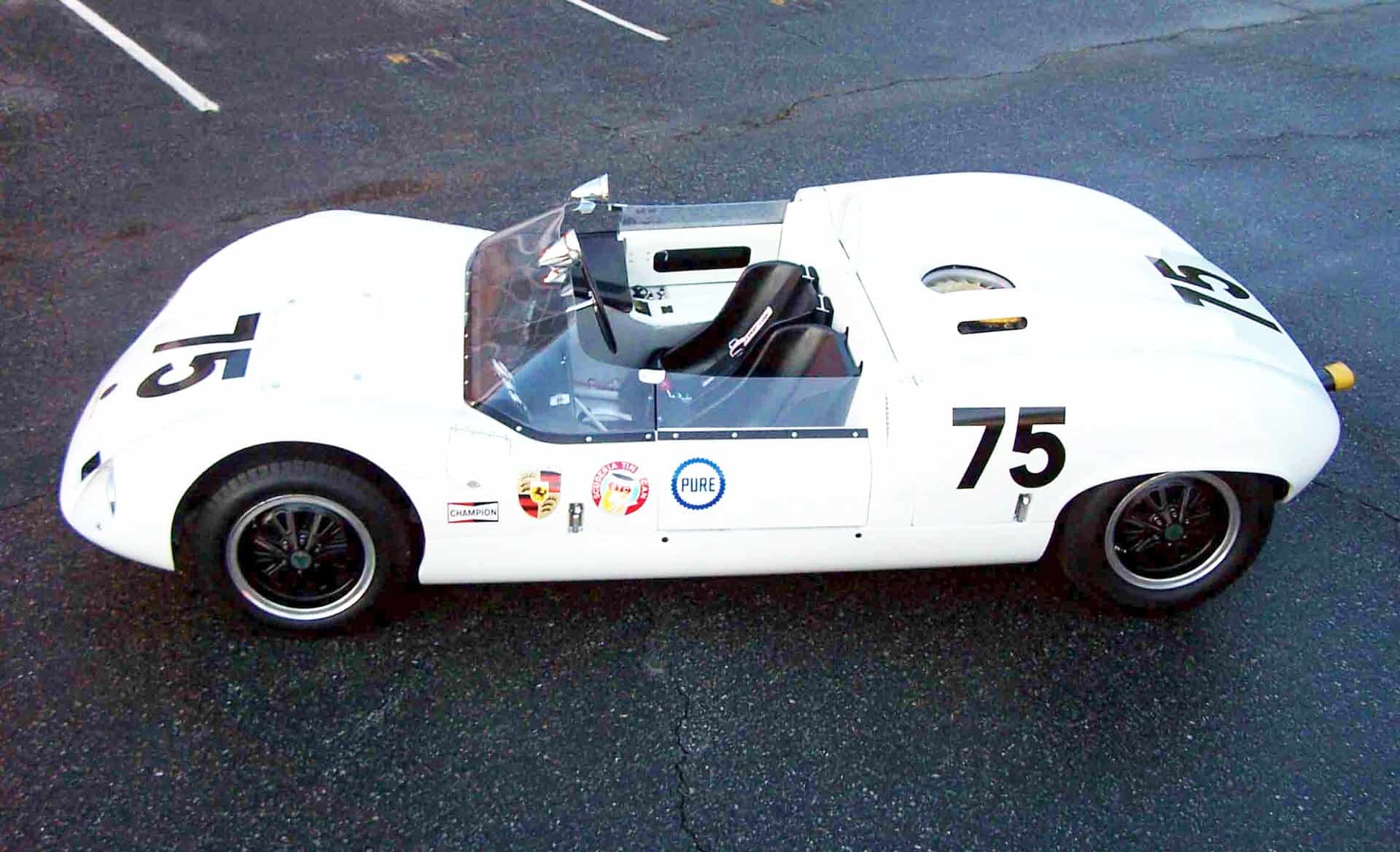
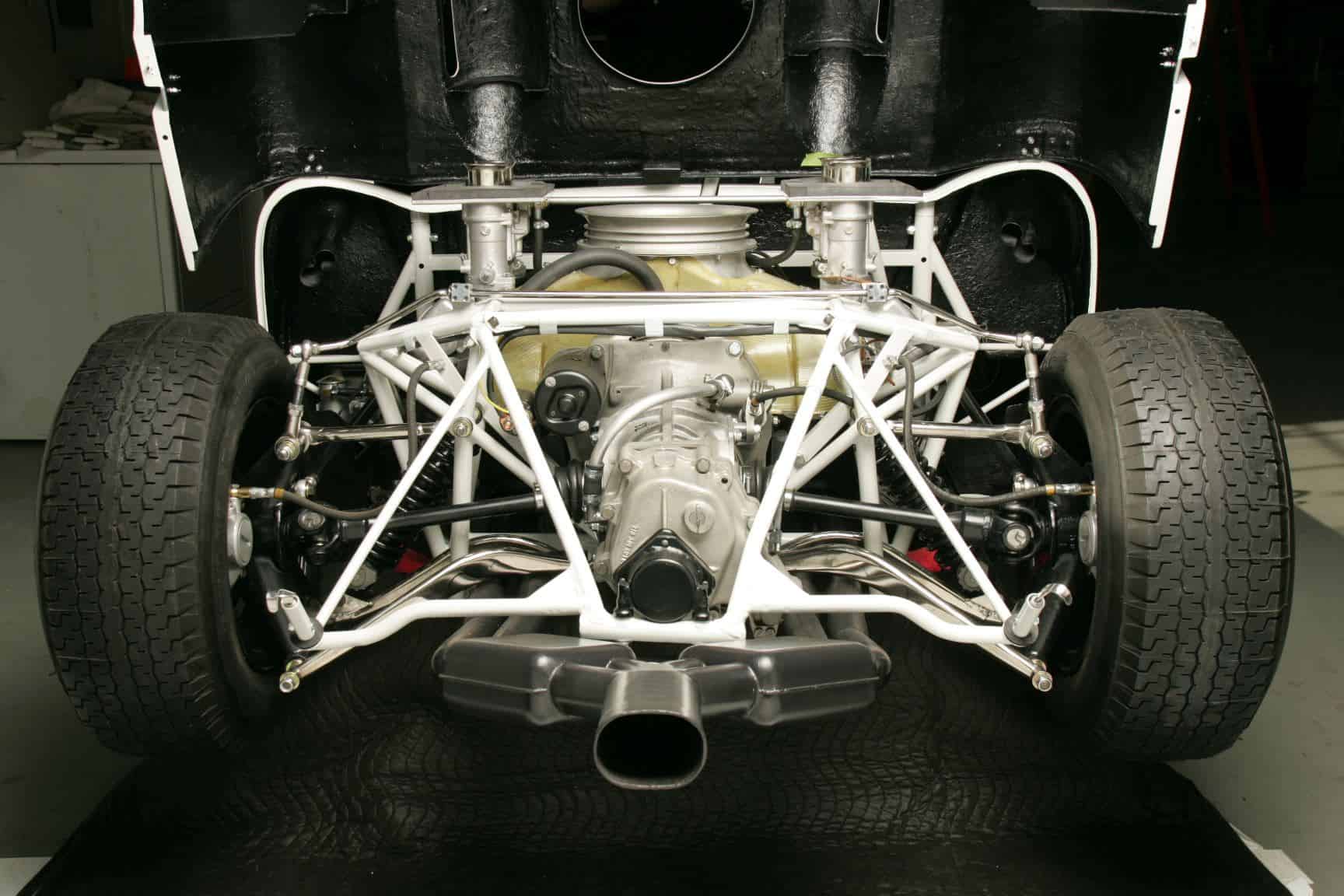

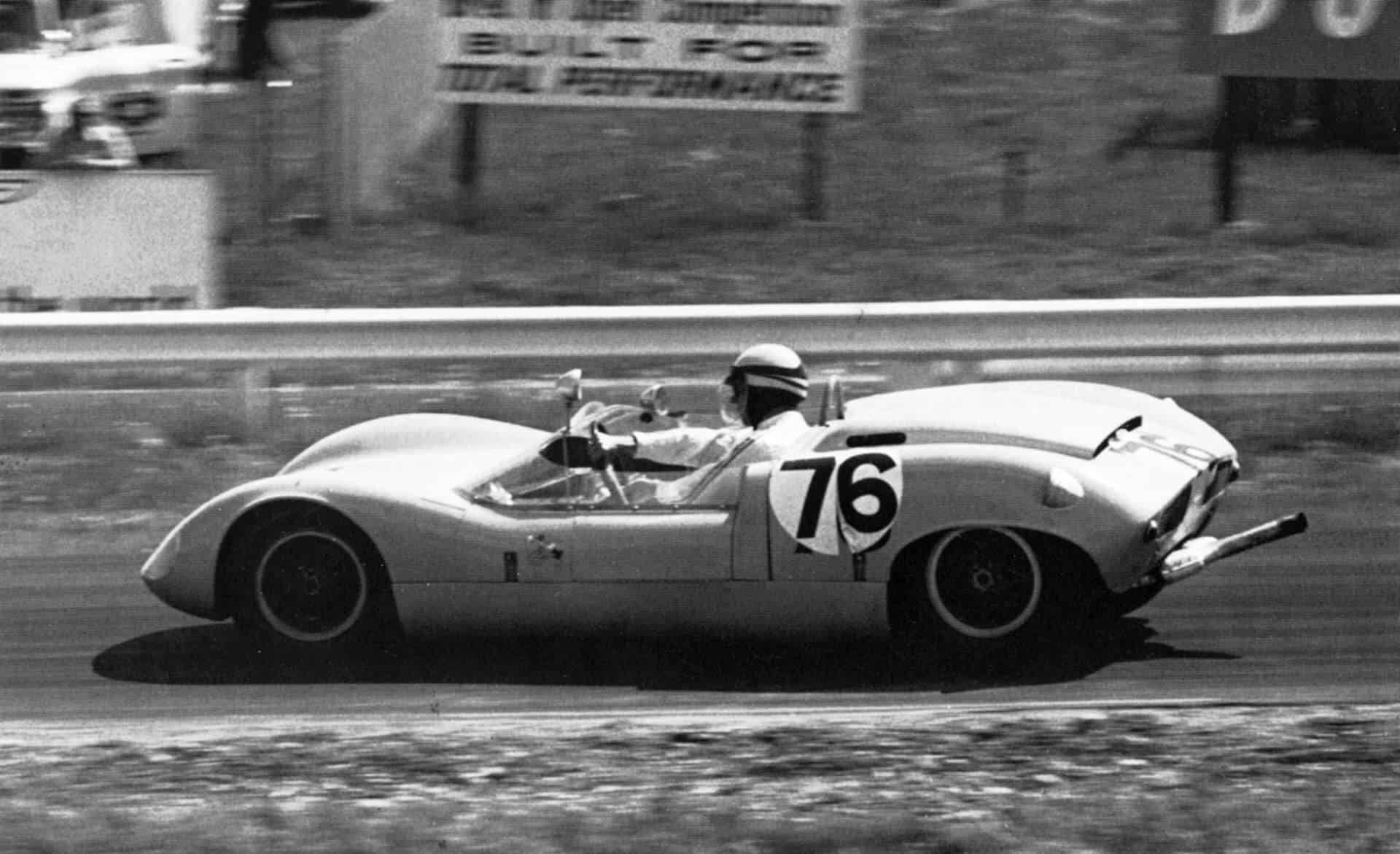

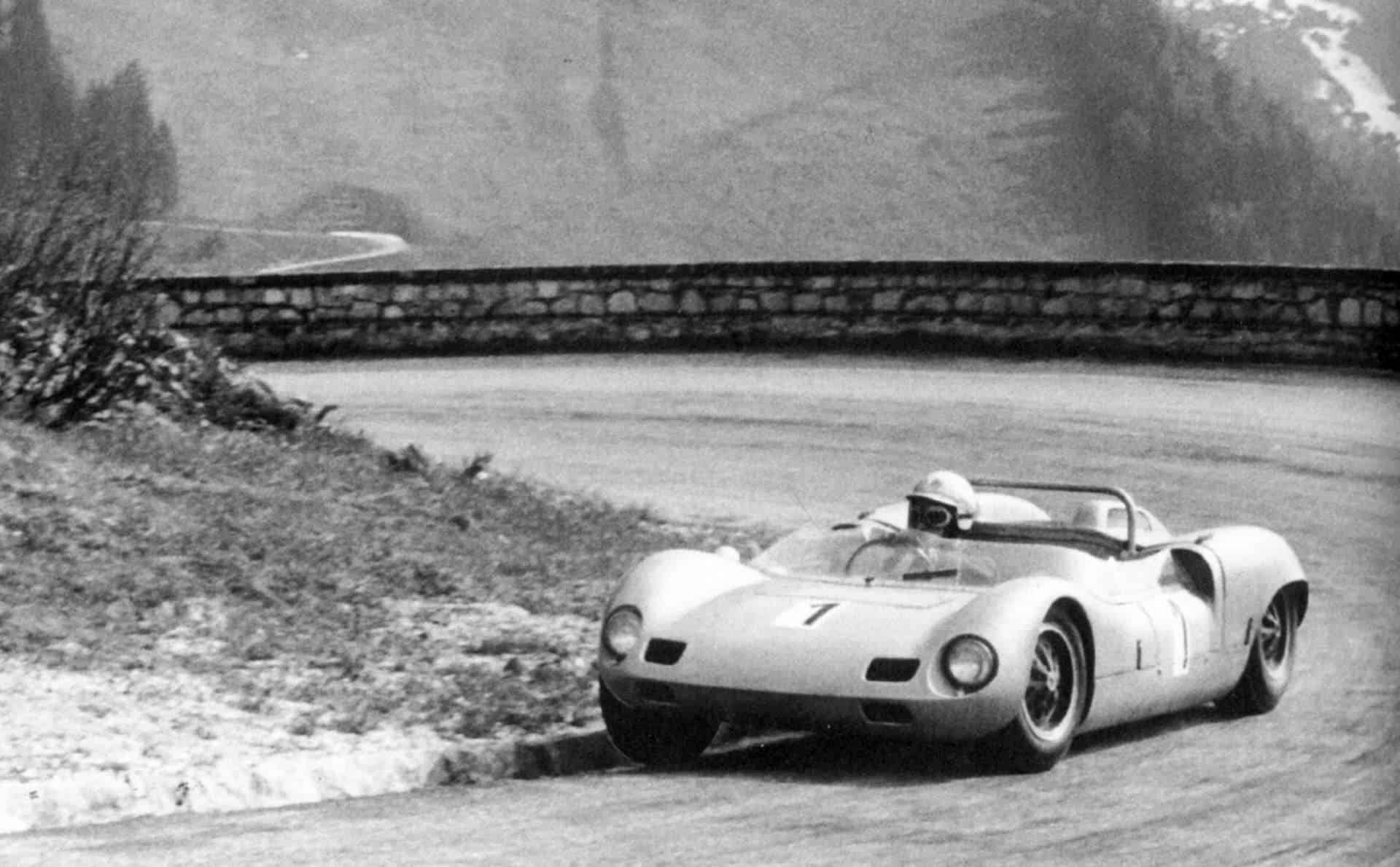
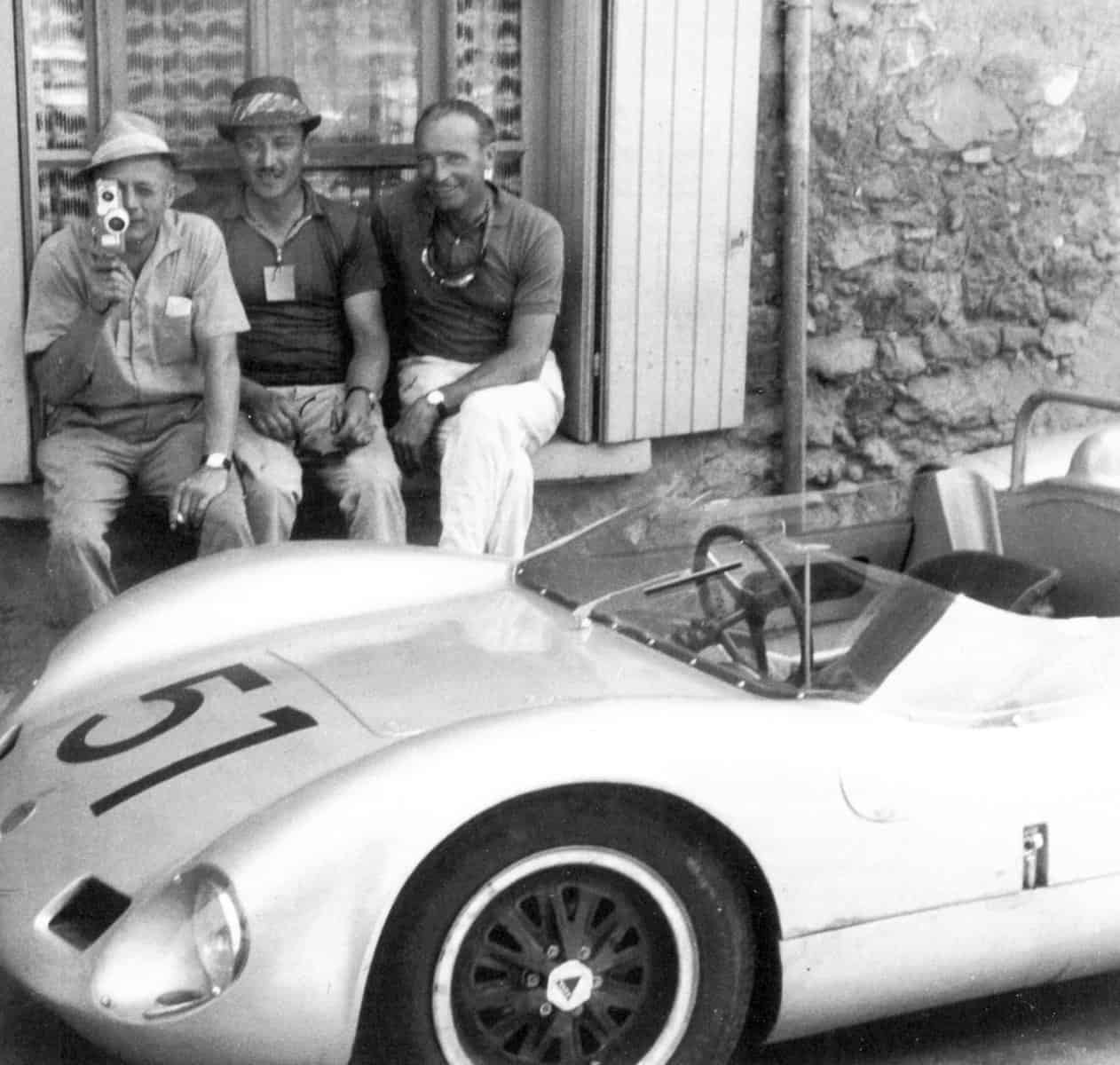
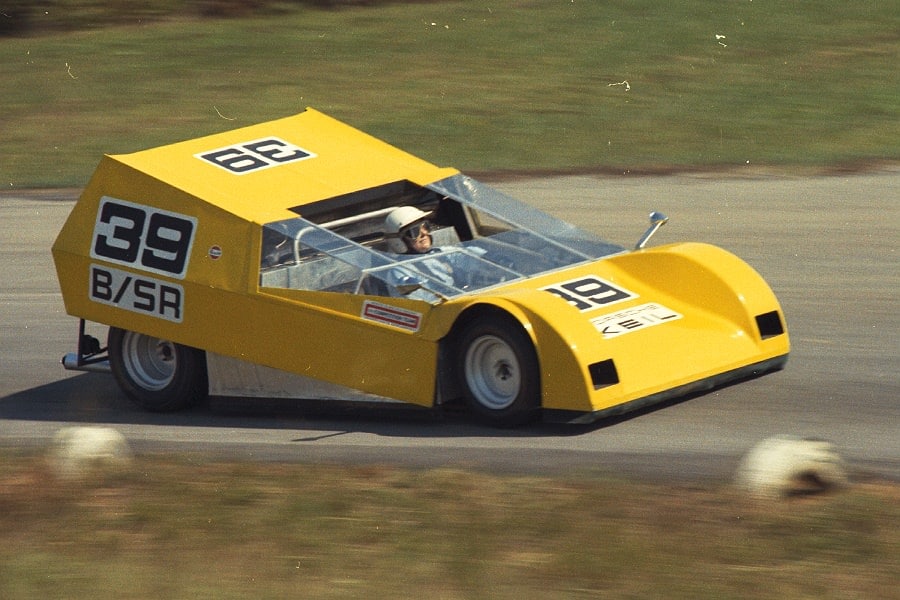



![alfa gtz perfectly imperfect webannerl[1]](https://automedia.revsinstitute.org/wp-content/uploads/2024/08/Alfa-GTZ-Perfectly-Imperfect-webannerl1-uai-1200x800.jpg)
